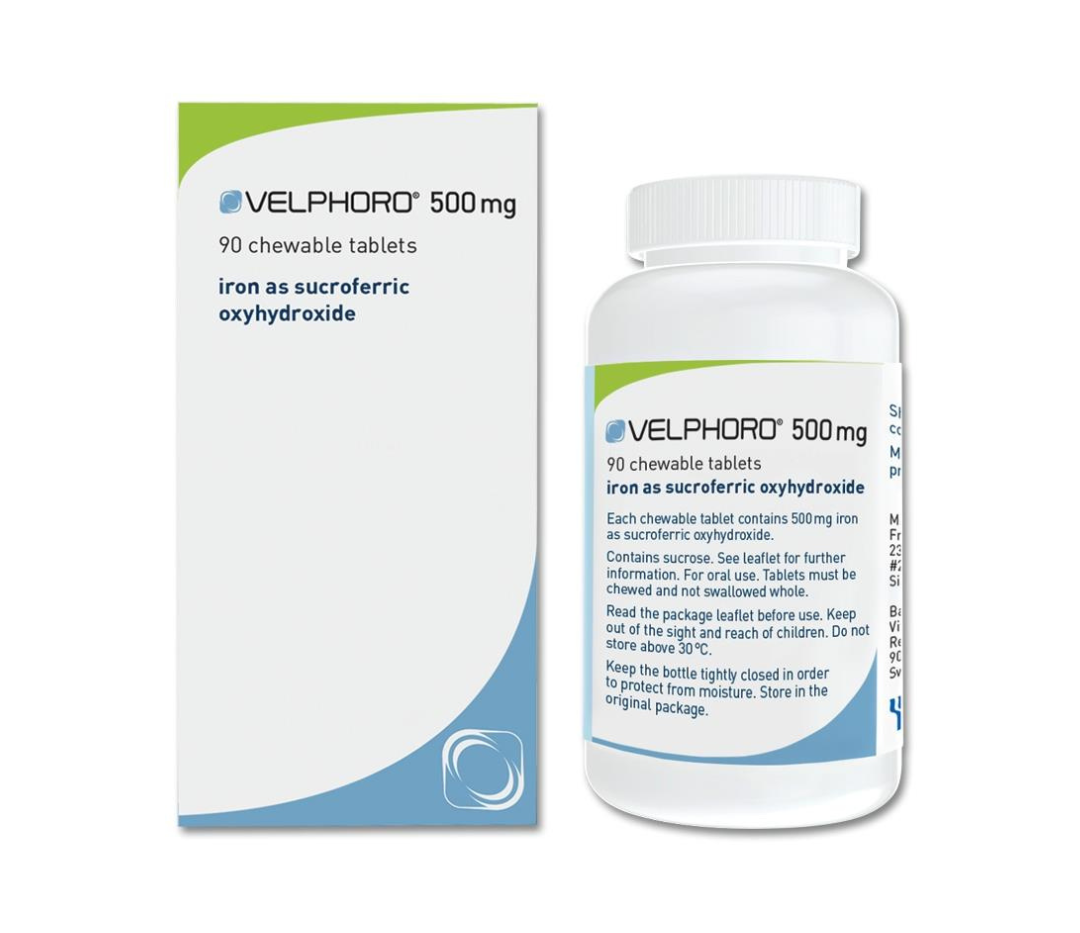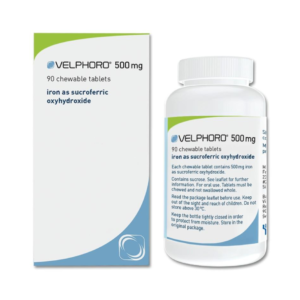Sucroferric Oxyhydroxide Chewable Tablets/维福瑞
The first iron-based non-calcium phosphate binder, sucrose iron oxyhydroxide chewable tablets (Vivre), have been approved for marketing by my country’s National Medical Products Administration (NMPA) with priority review. They are used to control serum phosphorus levels in adult patients with chronic kidney disease (CKD) receiving hemodialysis (HD) or peritoneal dialysis (PD). They can also be used to control serum phosphorus levels in pediatric patients with CKD stage 4-5 (defined as glomerular filtration rate <30 mL/min/1.73 m2) or CKD receiving dialysis aged 12 years and above. This drug fills the gap in the use of drugs for phosphate-lowering treatment in children with CKD.
Hyperphosphatemia is common in the end stage of CKD. This disease occurs due to impaired renal phosphate excretion. Elevated blood phosphorus concentrations directly aggravate vascular calcification and secondary hyperparathyroidism [1], which in turn leads to increased cardiovascular morbidity and mortality.
Currently, the treatment of hyperphosphatemia mainly follows the 3D principle: reducing phosphorus intake, adequate dialysis, and drug treatment. However, restricting dietary phosphorus intake is difficult to maintain in daily life and is not enough to normalize the blood phosphorus concentration of most patients. Standard intermittent hemodialysis performed three times a week usually cannot maintain the blood phosphorus concentration at an appropriate level. Therefore, in addition to restricting dietary phosphorus intake and receiving dialysis, CKD patients also need oral phosphorus-lowering drugs to control serum phosphorus concentration.
Current phosphorus-lowering drugs are mainly calcium-containing phosphate binders and non-calcium phosphate binders. Since non-calcium phosphate binders have no risk of vascular calcification, domestic and foreign guidelines unanimously recommend them as first-line phosphorus-lowering drugs and restrict the use of calcium-containing phosphate binders.
At present, based on the existing phosphorus-lowering drug treatment in China, the blood phosphorus compliance rate of CKD patients is only 15.4% to 38.5% [2, 3]. Therefore, clinical treatment requires more potent, safer and more compliant phosphorus-lowering drugs to meet clinical needs.
Share:
Products
Our offers
Health Classification
Let us work together to protect precious health






























